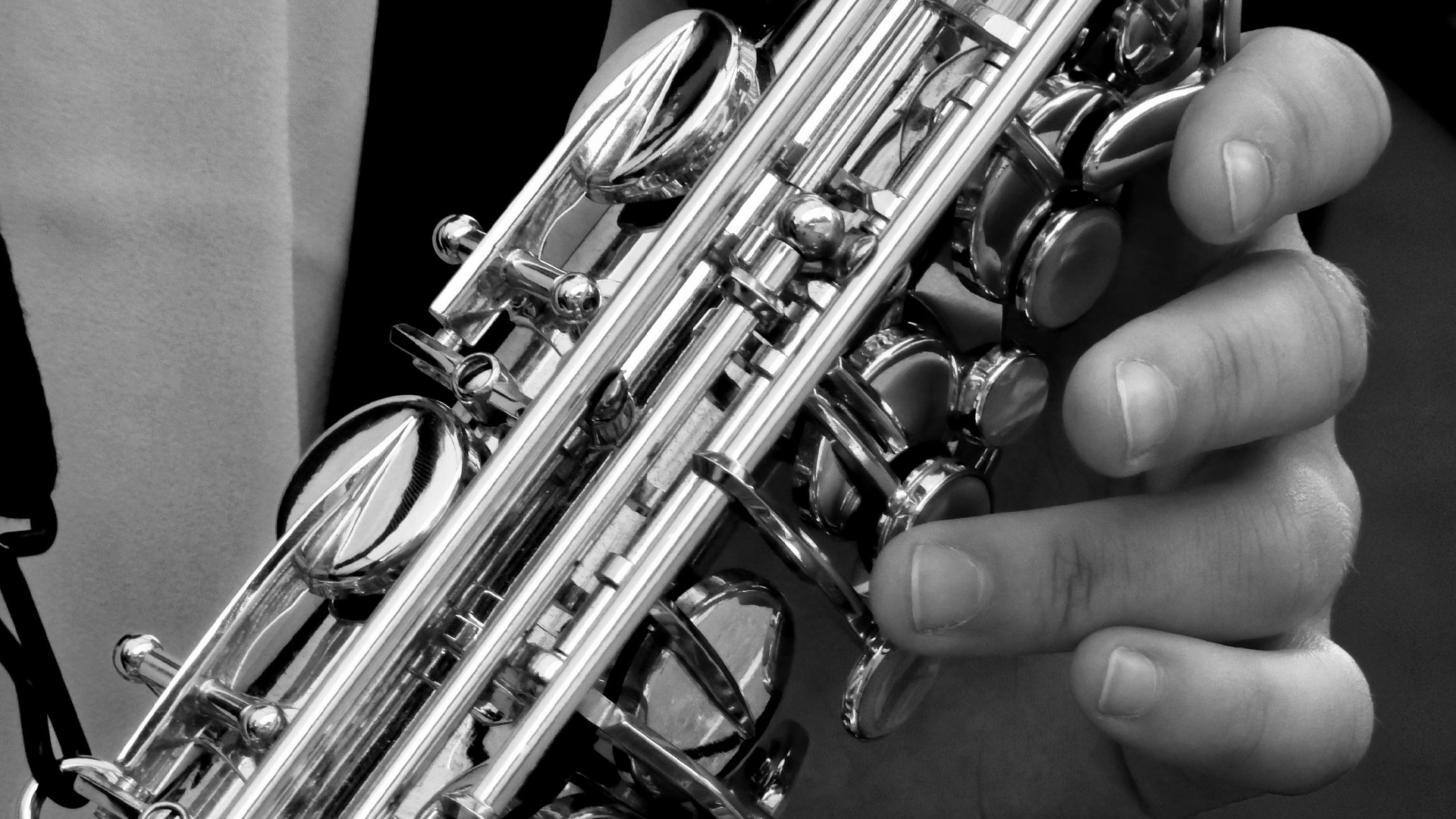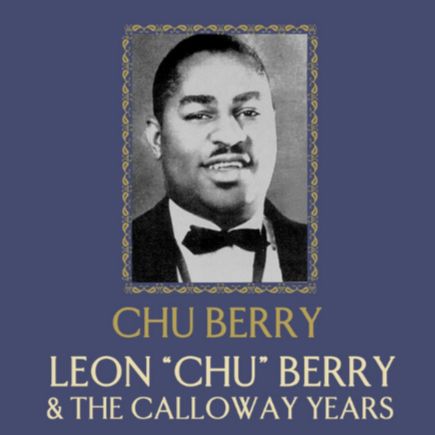Chu Berry: la voix ténor du swing aux portes du bebop
Né Leon Brown Berry, le saxophoniste Chu Berry reste l’une des figures majeures — et trop souvent sous-estimées — de l’âge d’or du swing. Admirateur de Coleman Hawkins, auquel il est souvent comparé, Berry développe dès les années 1930 un style personnel: fluide, nerveux, harmonique, à la croisée du swing et des prémices du bebop. Malgré une carrière écourtée par un accident tragique en 1941, à seulement 33 ans, son influence sur les générations futures est indéniable.
Originaire de l’Ohio, Berry débute au saxophone alto dans des fanfares locales avant de rejoindre, dès 1929, le groupe de Sammy Stewart à Chicago. Comme beaucoup de musiciens talentueux de province, il prend rapidement la route de New York, où Benny Carter l’intègre à son orchestre. En 1933, il rejoint la formation de Teddy Hill, dans laquelle il succède à Coleman Hawkins parti en Europe. C’est là que Chu Berry commence à affirmer un son distinctif, fait de virtuosité agile, de phrasés expressifs et d’un sens aigu de la construction mélodique.
Après un passage chez Fletcher Henderson, où il côtoie le trompettiste Roy Eldridge, Berry rejoint en 1937 l’orchestre de Cab Calloway. Il y restera jusqu’à sa mort, devenant une figure centrale de l’ensemble tout en participant activement aux jam sessions de Harlem, aux côtés de Billie Holiday, Teddy Wilson ou Dizzy Gillespie. C’est avec Calloway qu’il enregistre Ghost of a Chance, où son solo émouvant révèle la profondeur et la modernité de son jeu.
Chu Berry incarne une transition clé dans l’histoire du jazz: héritier du swing par son attachement à la mélodie et au rythme, il annonce déjà, par ses audaces harmoniques et la densité de ses phrases, les libertés du bebop à venir. Bien qu’il n’ait pas eu le temps d’explorer pleinement ce nouveau langage, son apport fut tel que Coleman Hawkins lui-même affirmait: «Chu était presque le meilleur…».
Chu Berry: la voz tenor del swing en las puertas del bebop
Nacido como Leon Brown Berry, el saxofonista Chu Berry sigue siendo una de las figuras más importantes —y a menudo subestimadas— de la era dorada del swing. Admirador de Coleman Hawkins, con quien frecuentemente se le compara, Berry desarrolló desde los años treinta un estilo personal: fluido, enérgico, lleno de riqueza armónica, en la encrucijada entre el swing clásico y los inicios del bebop. Aunque su carrera se vio truncada por un trágico accidente en 1941, con tan solo 33 años, su influencia en las generaciones posteriores es innegable.
Originario de Ohio, Berry comenzó tocando el saxofón alto en bandas locales antes de unirse en 1929 al grupo de Sammy Stewart en Chicago. Como muchos otros músicos talentosos de provincia, no tardó en trasladarse a Nueva York, donde Benny Carter lo incorporó a su orquesta. En 1933, se unió a la banda de Teddy Hill, en la que sustituyó a Coleman Hawkins, quien se había marchado a Europa. Fue allí donde Berry comenzó a afirmar un sonido distintivo, marcado por su virtuosismo ágil, su fraseo expresivo y su sensibilidad melódica.
Tras pasar por la orquesta de Fletcher Henderson, donde compartió escena con el trompetista Roy Eldridge, Berry se unió en 1937 al conjunto de Cab Calloway. Permanecería en él hasta su muerte, convirtiéndose en una figura esencial del grupo y participando en numerosas jam sessions en Harlem junto a Billie Holiday, Teddy Wilson o Dizzy Gillespie. Fue con Calloway que grabó Ghost of a Chance, en el que su solo revela la profundidad y modernidad de su estilo.
Chu Berry representa una figura de transición clave en la historia del jazz: heredero del swing por su apego a la melodía y al ritmo, anticipa ya las libertades del bebop gracias a su audacia armónica y a la densidad de sus frases. Aunque no llegó a explorar completamente este nuevo lenguaje, su legado fue tal que el propio Coleman Hawkins dijo de él: «Chu estuvo casi entre los mejores…».
Chu Berry: la voce tenorile dello swing alle soglie del bebop
Nato come Leon Brown Berry, il sassofonista Chu Berry resta una delle figure più importanti — e troppo spesso sottovalutate — dell’età d’oro dello swing. Ammiratore di Coleman Hawkins, a cui è spesso paragonato, Berry sviluppò già negli anni Trenta uno stile personale: fluido, energico, armonicamente ricco, al crocevia tra lo swing e le prime avvisaglie del bebop. Nonostante una carriera tragicamente interrotta nel 1941 a soli 33 anni, la sua influenza sulle generazioni successive è indiscutibile.
Originario dell’Ohio, Berry iniziò con il sassofono contralto nelle bande locali, per poi unirsi nel 1929 al gruppo di Sammy Stewart a Chicago. Come molti talenti della provincia, si trasferì rapidamente a New York, dove Benny Carter lo accolse nella sua orchestra. Nel 1933 entrò nella formazione di Teddy Hill, sostituendo Coleman Hawkins partito per l’Europa. Fu proprio in quel contesto che Berry iniziò ad affermare un suono distintivo, fatto di virtuosismo agile, fraseggi espressivi e un grande senso della costruzione melodica.
Dopo una parentesi con Fletcher Henderson, durante la quale collaborò con il trombettista Roy Eldridge, nel 1937 Berry entrò a far parte dell’orchestra di Cab Calloway. Vi rimase fino alla morte, diventando una figura centrale del gruppo e partecipando attivamente alle jam session di Harlem con artisti come Billie Holiday, Teddy Wilson e Dizzy Gillespie. Fu proprio con Calloway che incise Ghost of a Chance, dove il suo assolo commovente rivela la profondità e la modernità del suo linguaggio musicale.
Chu Berry incarna una figura di transizione chiave nella storia del jazz: erede dello swing per l’attenzione alla melodia e al ritmo, anticipa il bebop grazie all’audacia armonica e alla densità del suo fraseggio. Sebbene non abbia avuto il tempo di esplorare pienamente questo nuovo linguaggio, il suo contributo fu tale che lo stesso Coleman Hawkins affermò: «Chu era quasi il migliore…».
Chu Berry: the tenor voice of swing at the threshold of bebop
Born Leon Brown Berry, saxophonist Chu Berry remains one of the most significant — and often overlooked — figures of the swing era. A devoted admirer of Coleman Hawkins, to whom he is frequently compared, Berry developed a personal style as early as the 1930s: fluid, energetic, harmonically rich, standing at the crossroads between swing and the emerging bebop movement. Though his career was tragically cut short by a car accident in 1941 at just 33, his influence on future generations is undeniable.
Originally from Ohio, Berry began on alto saxophone in local marching bands before joining Sammy Stewart’s group in Chicago in 1929. Like many promising regional musicians, he soon made his way to New York, where Benny Carter invited him into his orchestra. In 1933, he joined Teddy Hill’s band, replacing Coleman Hawkins, who had left for Europe. It was there that Berry began to assert his distinctive sound — marked by agile technique, expressive phrasing, and a strong melodic sensibility.
After a stint with Fletcher Henderson, where he worked alongside trumpeter Roy Eldridge, Berry joined Cab Calloway’s orchestra in 1937. He remained with Calloway until his death, becoming a central voice in the ensemble and taking part in numerous Harlem jam sessions with artists like Billie Holiday, Teddy Wilson, and Dizzy Gillespie. His recording of Ghost of a Chance with Calloway stands out for its poignant solo, revealing the depth and modernity of his approach.
Chu Berry embodies a crucial transitional figure in jazz history: a swing-era player rooted in melody and rhythm who foreshadowed the harmonic freedom and complexity of bebop. Though he didn’t live to fully explore this new language, his legacy was such that Coleman Hawkins once said, “Chu was almost the best…”.


